Japanese sweets and teas every bit as elegant and colorful as Kyoto itself.
Read More
wagashi (Page 2)
Mickey and Minnie have been turned into sweet Japanese confections this winter, and one thing’s for sure: they’re way too adorable!
Tanabata, also known as the Star Festival, is once again on our doorstep and now with this “how to” video you can make your very own Raindrop Cake to celebrate!
After hearing that traditional Japanese sweets now come in the shape of lovable robot cat Doraemon, our food-loving writer Meg just had to give them a try!
How well do you know your wagashi (Japanese sweets)? If you’re struggling to put a name to any of the traditional delectables pictured above, there’s a store in Kyoto that can help.
By creating decorative embroidered versions of some of Japan’s most popular confections, Kyoto-based Kyototo is giving us an education in the names and background of the hand-crafted treats that are often seasonal but always delicious. Come with us as we take a look at twelve of the most beautiful wagashi you can find in Japan.
Remember those beautiful edible “jewels” that we shared with you a couple of weeks ago? Made simply from sugar, agar-agar, and a beverage of your choice, the jewels are both pretty to look at and make a cool – in both senses of the word – summer treat.
They’re still all the rage right now on Japanese social media, so our Japanese reporter Shimazu decided to try making some jewel flavor combinations for herself. She even experimented with three different manners of preparation–serving them right away, freezing them, and letting them sit for a few days to harden.
Which method of making them do you think she enjoyed the most?
If you’re someone who enjoys making treats like cakes and pastries, then perhaps you have first hand knowledge of how baking can sometimes be a tricky affair. Well, in Japan, we have a whole category of wagashi, or traditional Japanese sweets, that aren’t baked at all, called namagashi (literally, “raw confectionaries”). Namagashi are typically made from various colorful bean pastes and often crafted into delicate seasonal-themed shapes.
Earlier this month, we participated in a seminar to experience what namagashi-making is like. Join us as we see how a master chef creates beautiful flowers from bean paste, and then try our not-so-expert hand at creating our own confections!
Pretty much anyone can pick up some brownie mix at the local grocer, crack an egg into a bowl, mix, and end up with a piping hot tray of delicious goodies. That’s child’s play (literally, if you’re using an Easy Bake).
It’s another thing altogether to create some truly Pinterest-worthy “wagashi” Japanese sweets. You know what we’re talking about: The wabi-sabi-riffic, colorful eye-and-mouth candy we’ve gushed over here on this very site time and again.
Wagashi are equally intimidating items to make for foreigners and Japanese alike, often calling for seemingly exotic ingredients, mysterious baking methods and coming in hard-to-replicate shapes and sizes. But, lucky for enthusiasts, there’s now a series of home kits available online to make the process a (relative) breeze!
Do you remember our recent article that showcased Japanese confectioner Namikoshiken’s adorable menagerie of bite-sized manjū (sweet steamed buns)? Last week, out of sheer luck and coincidence, I received a box of the Suizokukan (aquarium) variety from a family friend who went on a trip to Nagoya in Aichi Prefecture, where the 87-year-old company is based. So of course, this calls for a taste test!
Read on to find out more about the wagashi treats and to view close-up photos of each lovable suizokukan resident. Was this writer able to harden her heart and mercilessly sink her teeth into these little guys? Anything for RocketNews24!
Okay, we know we’ve already introduced on our site countless Japanese treats which we think are irresistibly cute, but once again, we’ve found a little sweet something that we just had to share with you. Take a look at these lines of confectioneries sold by Japanese sweets maker Namikoshiken — they’re called the “Zoo” (dobutsuen) and “Aquarium” (suizokukan) series of sweet steamed buns, and when you see the confections, we think you’ll understand why.
Yes, the zoo and aquarium packages are a collection of animals and critters alright, and the only problem is that they just may look almost too cute to eat!
You’ve probably seen girls (and sometimes guys) taking pictures in restaurants and maybe you read their Twitter or Facebook updates about the good food they eat around Japan. Maybe you’re one of these foodagraphers. I wouldn’t blame you, in fact, I’ve done the same. Japanese food, everything from lunch-boxes to sweets, is often not only delicious looking, but is also often displayed in cute and fashionable ways.
But lately, social media and the restaurant review site Tabelog have been taken by storm by the updates and comments about three Kyoto sushi restaurants, due to their innovative menu and their ability to attract those squealing, cell-phone holding, Japanese women (and men?) by making their food undeniably cute.
If you’ve ever been to Kyoto, then you may know that the city’s food culture includes a rich history of traditional Japanese sweets, known as wagashi, which can be a perfect accompaniment to a day touring Kyoto’s famed temples. While many in Japan associate Kyoto with traditional sweets, a new anime series is about to take this aspect of the city’s food culture and combine it with a giant robot for a one-of-a-kind TV show.
Set in modern-day Kyoto, Domaiga D will center around a dessert shop owner who finds a giant robot beneath his shop right when the city is coming under attack by huge monsters.
Wagashi are traditional Japanese sweets usually made from mochi, bean paste, or fruit. If you’ve been to Japan or a nice Japanese restaurant, perhaps you enjoyed one sculpted to look like a flower, crane or some other very old-fashioned Japanese image.
Like most things in Japan, no matter how venerable, give it enough time and it will be kawaii-ified. Enter sweets shop Kuramoto Hinode, where a veteran wagashi chef has begun crafting anime and pop culture based sweets with leftover bits and bobs.
Japanese summers are hard to bear. With high humidity levels, the energy-sapping heat has such an overwhelming effect on the body there’s even a word for summer lethargy in the Japanese lexicon: natsubate.
Luckily for us, Japan has developed a number of unique ways to fight the summer heat. One of the best ways to cool down is in the sensory pleasure of traditional Japanese sweets featuring watery wonderlands, night skies and gorgeous hues of blue. We’ve found 15 of the best summer sweets that are so amazing they’re more like edible works of art.
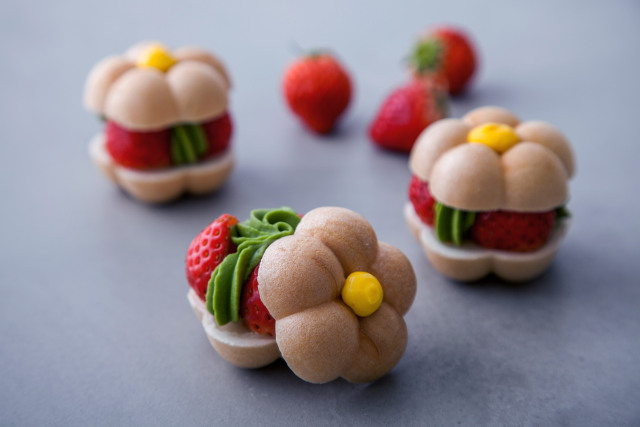
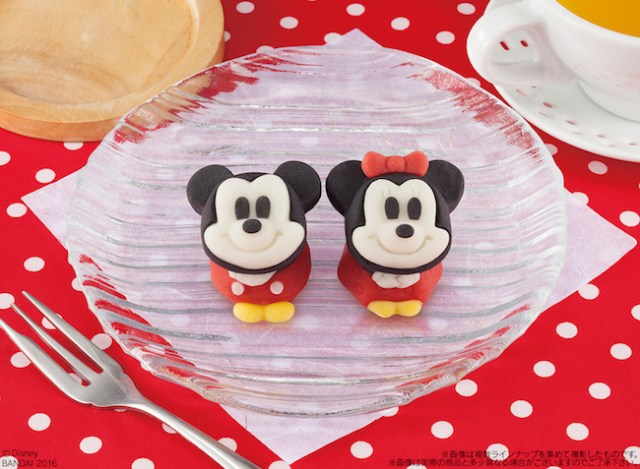
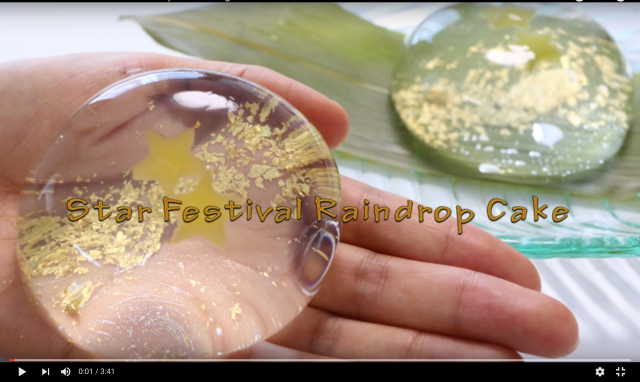
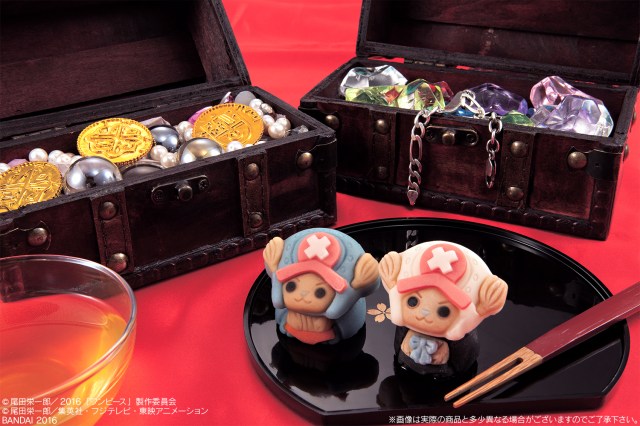
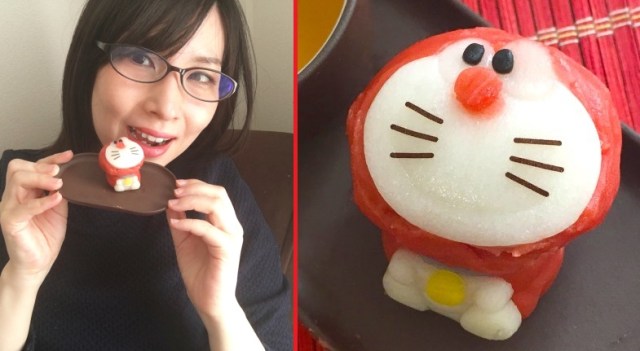
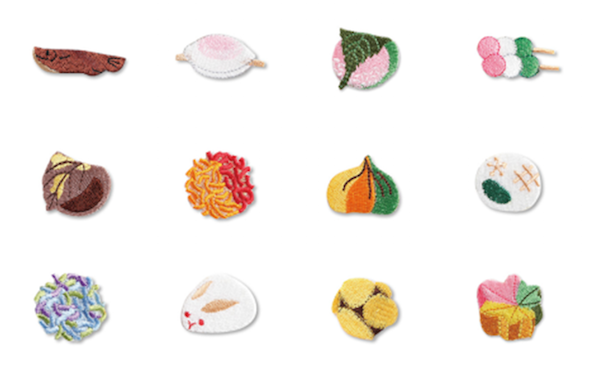
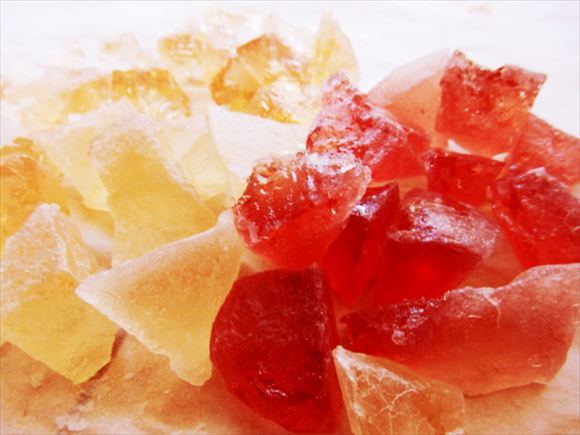
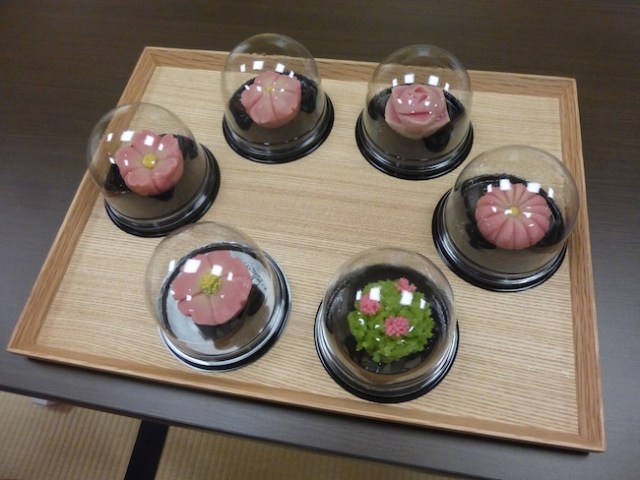
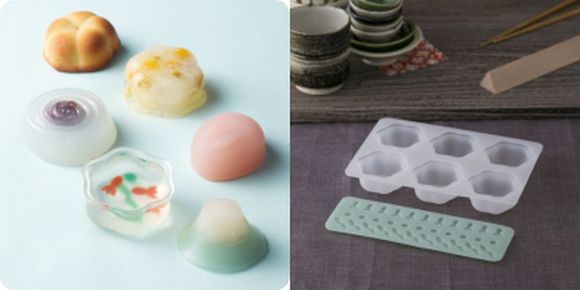
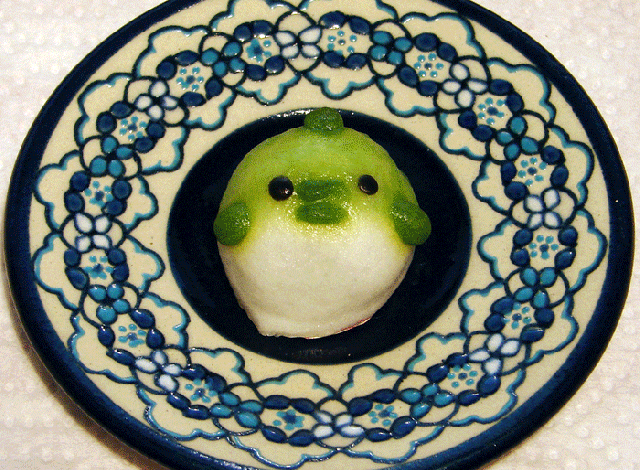
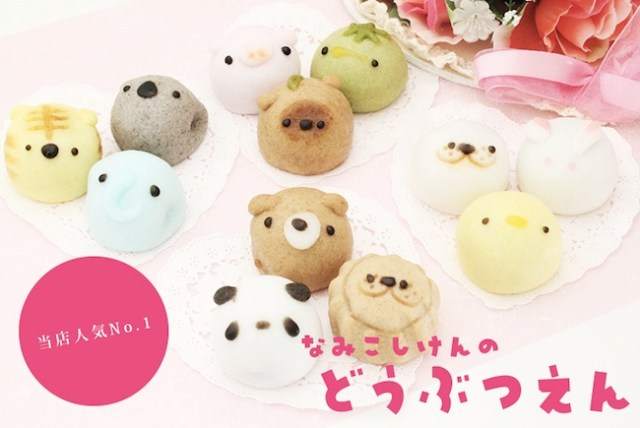
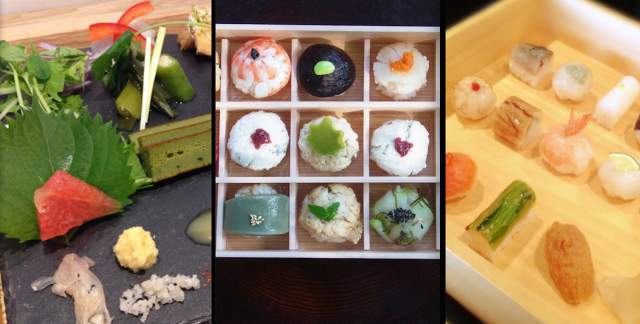
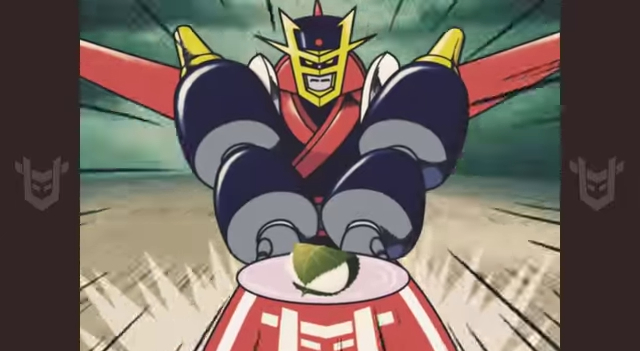
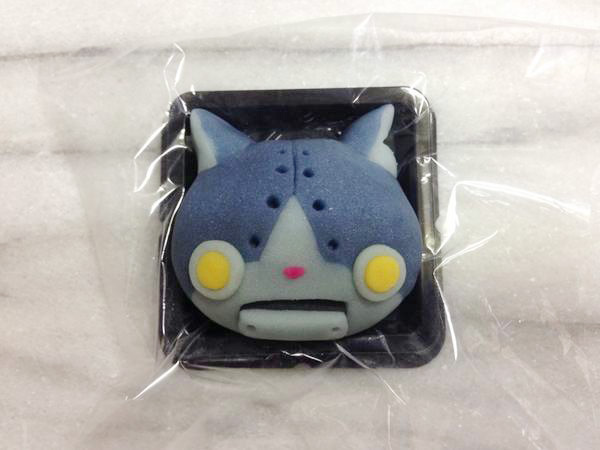
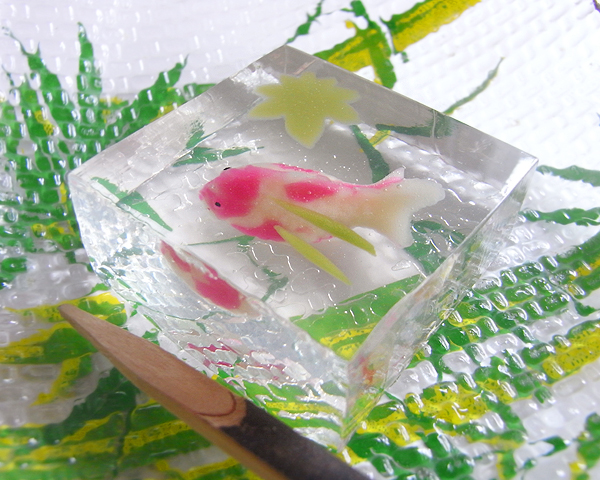
 McDonald’s new Happy Meals offer up cute and practical Sanrio lifestyle goods
McDonald’s new Happy Meals offer up cute and practical Sanrio lifestyle goods All-you-can-drink Starbucks and amazing views part of Tokyo’s new 170 meter-high sky lounge
All-you-can-drink Starbucks and amazing views part of Tokyo’s new 170 meter-high sky lounge More foreign tourists than ever before in history visited Japan last month
More foreign tourists than ever before in history visited Japan last month Starbucks reopens at Shibuya Scramble Crossing with new look and design concept
Starbucks reopens at Shibuya Scramble Crossing with new look and design concept The oldest tunnel in Japan is believed to be haunted, and strange things happen when we go there
The oldest tunnel in Japan is believed to be haunted, and strange things happen when we go there Beautiful Sailor Moon manhole cover coasters being given out for free by Tokyo tourist center
Beautiful Sailor Moon manhole cover coasters being given out for free by Tokyo tourist center Foreign English teachers in Japan pick their favorite Japanese-language phrases【Survey】
Foreign English teachers in Japan pick their favorite Japanese-language phrases【Survey】 Man doesn’t want to waste money on software, creates brilliant illustrations on Excel instead
Man doesn’t want to waste money on software, creates brilliant illustrations on Excel instead Is the new Shinkansen Train Desk ticket worth it?
Is the new Shinkansen Train Desk ticket worth it? Awesome Japanese elementary school teacher rewards kids who use independent learning on his tests
Awesome Japanese elementary school teacher rewards kids who use independent learning on his tests Disney princesses get official manga makeovers for Manga Princess Cafe opening in Tokyo
Disney princesses get official manga makeovers for Manga Princess Cafe opening in Tokyo We try out “Chan Ramen”, an underground type of ramen popular in the ramen community
We try out “Chan Ramen”, an underground type of ramen popular in the ramen community Beautiful new Final Fantasy T-shirt collection on the way from Uniqlo【Photos】
Beautiful new Final Fantasy T-shirt collection on the way from Uniqlo【Photos】 There’s a park inside Japan where you can also see Japan inside the park
There’s a park inside Japan where you can also see Japan inside the park Japanese convenience store packs a whole bento into an onigiri rice ball
Japanese convenience store packs a whole bento into an onigiri rice ball Studio Ghibli releases Kiki’s Delivery Service chocolate cake pouches in Japan
Studio Ghibli releases Kiki’s Delivery Service chocolate cake pouches in Japan Japan’s bone-breaking and record-breaking roller coaster is permanently shutting down
Japan’s bone-breaking and record-breaking roller coaster is permanently shutting down New definition of “Japanese whiskey” goes into effect to prevent fakes from fooling overseas buyers
New definition of “Japanese whiskey” goes into effect to prevent fakes from fooling overseas buyers Foreign passenger shoves conductor on one of the last full runs for Japan’s Thunderbird train
Foreign passenger shoves conductor on one of the last full runs for Japan’s Thunderbird train Our Japanese reporter visits Costco in the U.S., finds super American and very Japanese things
Our Japanese reporter visits Costco in the U.S., finds super American and very Japanese things Kyoto bans tourists from geisha alleys in Gion, with fines for those who don’t follow rules
Kyoto bans tourists from geisha alleys in Gion, with fines for those who don’t follow rules Studio Ghibli unveils Mother’s Day gift set that captures the love in My Neighbour Totoro
Studio Ghibli unveils Mother’s Day gift set that captures the love in My Neighbour Totoro Domino’s Japan now sells…pizza ears?
Domino’s Japan now sells…pizza ears? New Japanese KitKat flavour stars Sanrio characters, including Hello Kitty
New Japanese KitKat flavour stars Sanrio characters, including Hello Kitty Sales of Japan’s most convenient train ticket/shopping payment cards suspended indefinitely
Sales of Japan’s most convenient train ticket/shopping payment cards suspended indefinitely Sold-out Studio Ghibli desktop humidifiers are back so Totoro can help you through the dry season
Sold-out Studio Ghibli desktop humidifiers are back so Totoro can help you through the dry season Japanese government to make first change to romanization spelling rules since the 1950s
Japanese government to make first change to romanization spelling rules since the 1950s Ghibli founders Toshio Suzuki and Hayao Miyazaki contribute to Japanese whisky Totoro label design
Ghibli founders Toshio Suzuki and Hayao Miyazaki contribute to Japanese whisky Totoro label design Doraemon found buried at sea as scene from 1993 anime becomes real life【Photos】
Doraemon found buried at sea as scene from 1993 anime becomes real life【Photos】 Tokyo’s most famous Starbucks is closed
Tokyo’s most famous Starbucks is closed One Piece characters’ nationalities revealed, but fans have mixed opinions
One Piece characters’ nationalities revealed, but fans have mixed opinions We asked a Uniqlo employee what four things we should buy and their suggestions didn’t disappoint
We asked a Uniqlo employee what four things we should buy and their suggestions didn’t disappoint Princesses, fruits, and blacksmiths: Study reveals the 30 most unusual family names in Japan
Princesses, fruits, and blacksmiths: Study reveals the 30 most unusual family names in Japan Studio Ghibli’s new desktop Howl’s Moving Castle will take your stationery on an adventure
Studio Ghibli’s new desktop Howl’s Moving Castle will take your stationery on an adventure Beautiful Sailor Moon manhole cover coasters being given out for free by Tokyo tourist center
Beautiful Sailor Moon manhole cover coasters being given out for free by Tokyo tourist center Foreign English teachers in Japan pick their favorite Japanese-language phrases【Survey】
Foreign English teachers in Japan pick their favorite Japanese-language phrases【Survey】 Man doesn’t want to waste money on software, creates brilliant illustrations on Excel instead
Man doesn’t want to waste money on software, creates brilliant illustrations on Excel instead Is the new Shinkansen Train Desk ticket worth it?
Is the new Shinkansen Train Desk ticket worth it? Awesome Japanese elementary school teacher rewards kids who use independent learning on his tests
Awesome Japanese elementary school teacher rewards kids who use independent learning on his tests One of Tokyo’s most famous meeting-spot landmarks is closing for good
One of Tokyo’s most famous meeting-spot landmarks is closing for good Japanese woman stumbles on the power of the infamous “gaijin seat” phenomenon during flight
Japanese woman stumbles on the power of the infamous “gaijin seat” phenomenon during flight Osaka’s creepy cute mascot speaks for first time, adds more fuel the creepy OR cute debate【Video】
Osaka’s creepy cute mascot speaks for first time, adds more fuel the creepy OR cute debate【Video】 Disney princesses get official manga makeovers for Manga Princess Cafe opening in Tokyo
Disney princesses get official manga makeovers for Manga Princess Cafe opening in Tokyo Massive-variation new Pikachu plushie line lets you find the perfect Pikachu just for you
Massive-variation new Pikachu plushie line lets you find the perfect Pikachu just for you Tokyo’s super-secret-location sushi restaurant has a stand-up sister shop that’s open to all
Tokyo’s super-secret-location sushi restaurant has a stand-up sister shop that’s open to all Starbucks adds a matcha and pistachio milk tea latte to the menu in Japan for a limited time
Starbucks adds a matcha and pistachio milk tea latte to the menu in Japan for a limited time The three ways to say “love” in Japanese, and when to use them
The three ways to say “love” in Japanese, and when to use them